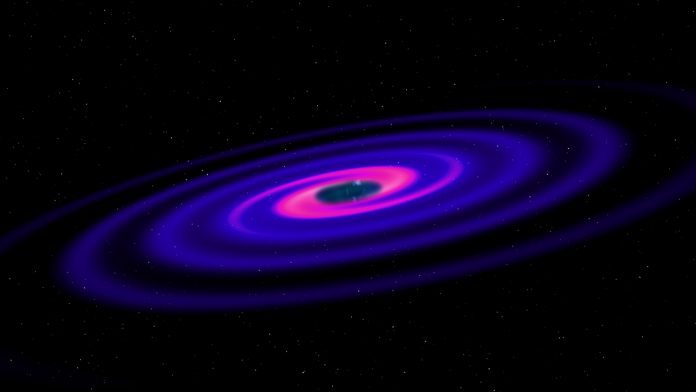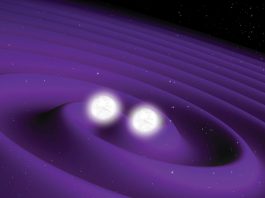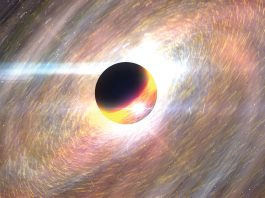The Kavli Institute for the Physics and Mathematics of the Universe (Kavli IPMU) believe that primordial black holes, which formed in the early Universe, could be hidden ‘baby universes’.
Primordial black holes could be responsible for some of the observed gravitational waves signals, and seed supermassive black holes found in the centre of our Galaxy and other galaxies.
The team hypothesise that primordial black holes could also play a role in the synthesis of heavy elements. Kavli IPMU researchers believe that when these early black holes collide with neutron stars and destroy them, they release neutron-rich material. There is also a possibility that the mysterious dark matter, which accounts for most of the matter in the Universe, is composed of primordial black holes.
To learn more about primordial black holes, the research team, including Kavli IPMU members Alexander Kusenko, Misao Sasaki, Sunao Sugiyama, Masahiro Takada and Volodymyr Takhistov, looked at the early Universe for clues.
The early Universe was so dense that any positive density fluctuation of more than 50% would create a black hole. However, cosmological perturbations that seeded galaxies are known to be much smaller. Nevertheless, several processes in the early Universe could have created the right conditions for the black holes to form.
The theory of baby universes
One exciting possibility is that primordial black holes could form from the baby universes created during inflation, a period of rapid expansion that is believed to be responsible for seeding the structures we observe today, such as galaxies and clusters of galaxies. During inflation, baby universes could have branched from our Universe. According to Kavli IPMU researchers, a small daughter universe would eventually collapse, but the large amount of energy released in the small volume causes a black hole to form.
If a bigger baby universe is bigger than critical size, Einstein’s theory of gravity allows the baby universe to exist in a state that appears different to an observer on the inside and the outside. An internal observer sees it as an expanding universe, while an outside observer (such as us) sees it as a black hole. In either case, the big and the small baby universes are seen by us as primordial black holes, which conceal the underlying structure of multiple universes behind their ‘event horizons’. The event horizon is a boundary below which everything, even light, is trapped and cannot escape the black hole.
Evidence of primordial black holes
In their paper, the team described a novel scenario for primordial black holes formation and showed that the black holes from the ‘multiverse’ scenario can be found using the Hyper Suprime-Cam (HSC) of the 8.2m Subaru Telescope, a gigantic digital camera—the management of which Kavli IPMU has played a crucial role—near the 4,200 metre summit of Mt. Mauna Kea in Hawaii.
Their work is an exciting extension of the HSC search for primordial black holes that Masahiro Takada, a principal investigator at the Kavli IPMU, and his team are pursuing. The HSC team has recently reported leading constraints on the existence of primordial black holes.
The HSC has a unique capability of capturing images of the entire Andromeda galaxy every few minutes. If a black hole passes through the line of sight to one of the stars, the black hole’s gravity bends the light rays and makes the star appear brighter than before for a short period of time. The duration of the star’s brightening tells the astronomers the mass of the black hole. With HSC observations, one can simultaneously observe one hundred million stars, casting a wide net for primordial black holes that may be crossing one of the lines of sight.
The first HSC observations have already reported a very intriguing candidate event consistent with a primordial black hole from the ‘multiverse’, with a black hole mass comparable to the mass of the Moon. Encouraged by this first sign, and guided by the new theoretical understanding, the team is conducting a new round of observations to extend the search and to provide a definitive test of whether primordial black holes from the multiverse scenario can account for all dark matter.









